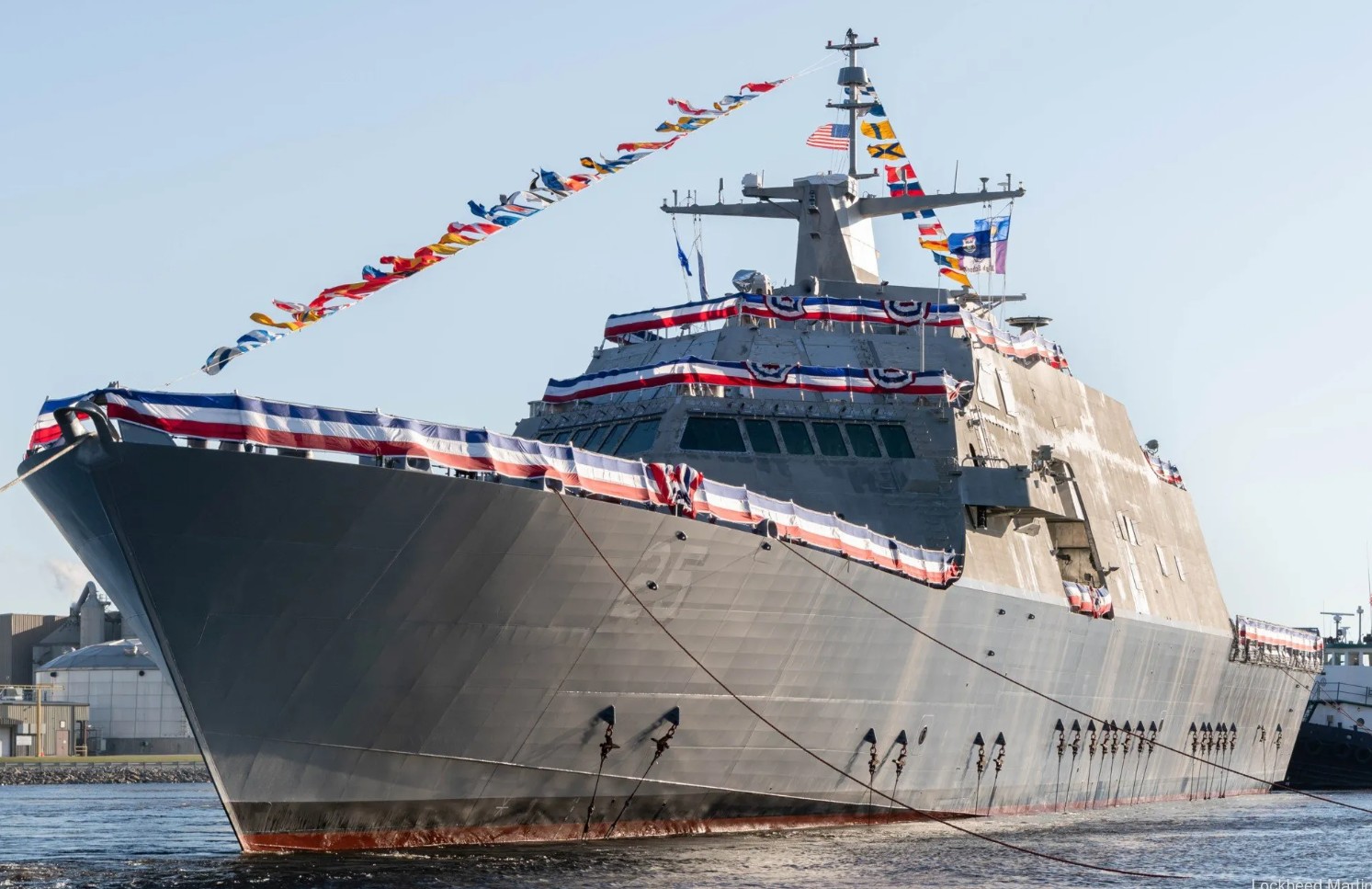Last week, the US Navy (USN) commissioned the USS Marinette Littoral Combat Ship (LCS), part of the Freedom-class LCS boats. However, Marinette might serve the USN for just ten years, probably the shortest lifespan for any warship, given that the LCS vessels have likewise been retired previously.
232 Times Greater Than US Navy, China’s Shipbuilding Prowess Eclipses The Might Of US – New Report
The vessels have had troubled financial and technical issues and poor military utility in conventional warfare with countries with comparable military strength. The USN has two types of LCS boats. The Freedom-class has a traditional ‘monohull’ design, while the Independence-class ships possess an unorthodox ‘trimaran’ hull.
The ships were designed to fight close to enemy coasts, possibly in countries where the US would intervene militarily, such as operations against terrorist groups as a part of its two-decade war on terror.
Such interventions were expected to continue long after the 9/11 attacks on the Twin Towers in New York. But, in a decade or more of that 2001 call for war on terror, such operations have now gone outdated, as geopolitics changed and the US got drawn into a Great Power rivalry for supremacy with Russia and China.
According to a report in Naval Technology, the Martinette was commissioned in Maryland. “The Navy designed the fleet to counter growing potential ‘asymmetric’ threats of coastal mines, quiet diesel submarines, and the potential to carry explosives and terrorists on small, fast, armed boats,” the report said.
The USN has, however, been trying to remove a significant portion of the LCS fleet in recent years, as difficulties with maintenance, “external concerns about the type’s survivability in contested maritime environments, and a lack of available modular mission modules, hindered its development and service use.”

LCS Ships Inducted & Retired So Far
Of the 20 Trimaran-type Independence-class vessels the USN has, three have been decommissioned. Two include the lead ship USS Independence, quietly decommissioned in July 2021 after 11 years in the US Navy.
It was inducted in January 2010. Independence’s sister ship, Coronado, was decommissioned on September 14, 2022, following just eight years of service, after being commissioned on April 5, 2014.
As for the Freedom-class LCS, the lead ship, USS Freedom (the regular monohull-shaped boat), was decommissioned on September 29, 2021. It joined the US Navy service in November 2008.
Other Freedom-class vessels, including the Fort Worth, Detroit, and Little Rock, are being pushed by the US Navy to be retired in its 2022 budget — after joining service as recently as 2014, 2012, 2016, and 2017, respectively. The Naval News report, however, claims that four Independence-class ships have already retired.
Unending Technical Flaws
The LCS was meant to be fast, inexpensive, and utilize easily swappable “mission modules” that allowed an individual ship to rapidly reconfigure for anti-surface, anti-submarine warfare, and mine-hunting missions.
According to a report in Popular Mechanics, after 15 years, only the anti-surface module is fully deployable, with the anti-submarine and mine-hunting modules still not ready for installation.
In May 2022, the Navy Times reported “structural defects and cracks” on the Independence-class version of the LCS. This required replacing the deck and the shell plates, making the ship slower and less maneuverable. Under the current circumstances, the boats were ordered not to be sailed into higher sea states (or rougher seas).
The report added that the Freedom-class boats in question suffered from an infamous transmission issue across all the class ships. This flaw with the ‘combining gear,’ a complicated gearing mechanism that links the engines of the boat, is an engineering defect that shipbuilder Lockheed Martin was fixing, USNI News reported in January 2021.
Throughout 2020, the Navy has linked propulsion failures in USS Detroit (LCS-7) and USS Little Rock (LCS-9) to the defect in the bearings system that connects the ship’s Rolls Royce MT30 gas turbines and the ship’s Colt-Pielstick diesel engines, which power the main drive shaft to achieve the ship’s 40-knot top speed.
By November 2021, the estimated cost of each of the 23-24 LCS boats was around $500 million, besides facing cost overruns and delays.
No Use In Modern Warfare
Interestingly, the Independence was also offered to the Taiwanese Navy in April 2022. The acquisition would have, however, had less tactical and technological utility before a more diverse, self-made, and asymmetrically threatening People’s Liberation Army – Navy (PLA-N), touched upon in a EurAsian Times analysis here.
“Other secondary missions, such as irregular warfare and support for special operations forces, seem to have been quietly abandoned,” the Popular Mechanics report added. This can possibly be owing to the sudden reorientation towards conventional warfare with peer adversaries that the US faced in the late 2000s, as China and Russia reinvented themselves militarily.
The wars in Iraq and Afghanistan were imminently drawing to a close. The US military realized that the scenario where it would have to continue to fight non-state actors with no regular, professionally trained armed forces from close to their shores was no longer a possibility.
- The author can be reached at satamp@gmail.com
- Follow EurAsian Times on Google News